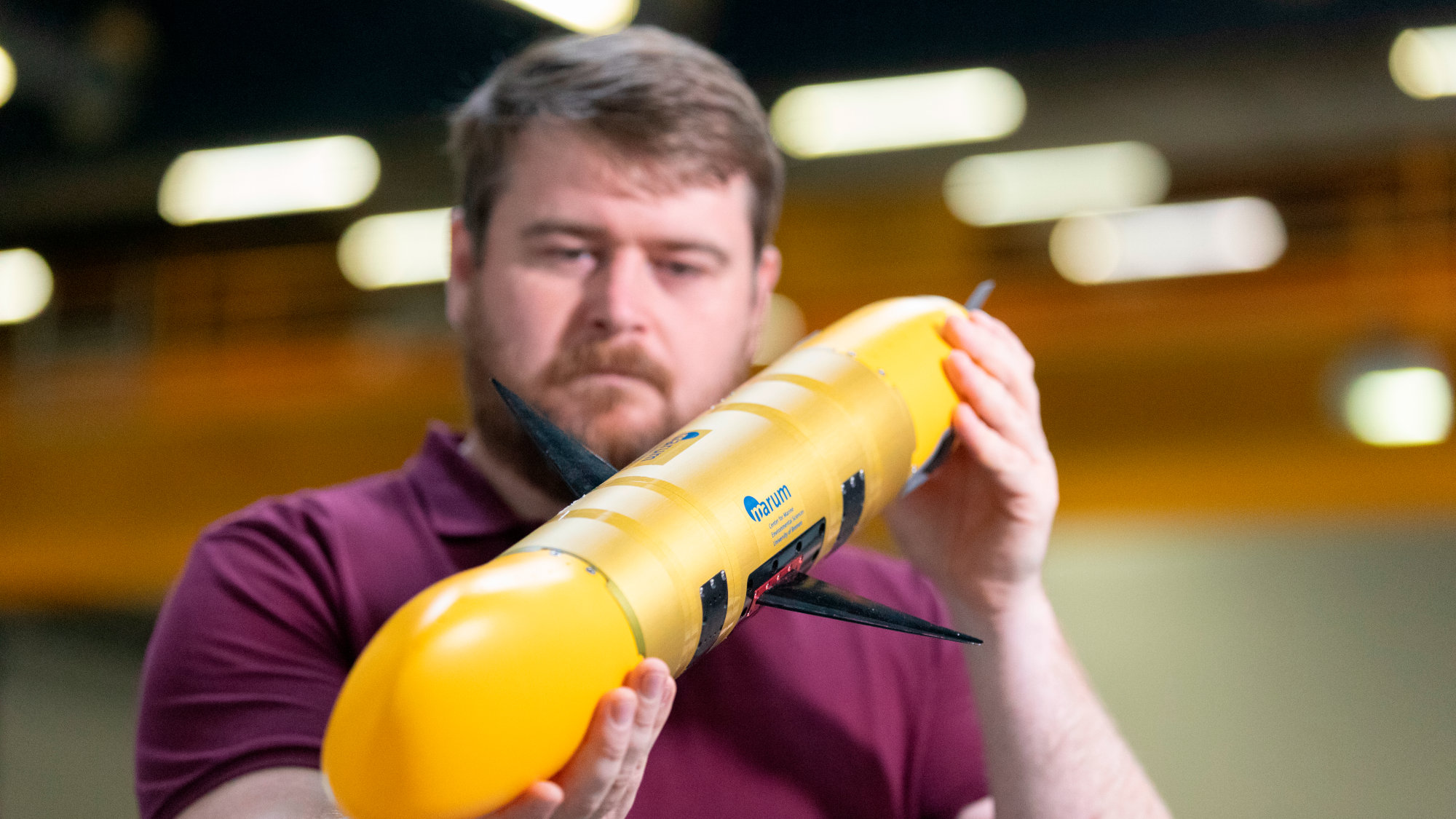
© Jens Lehmkühler
A Mini Robot for Icy Depths
Hidden inside an ice-melting probe, a mini robot will be transported through a thick layer of ice to explore new worlds on its own
This project sounds incredible, and it is. Encapsulated in an ice-melting probe, a robot developed by researchers from member institutions of the U Bremen Research Alliance will be transported through a 4,000-meter layer of ice to independently explore new worlds – initially in Antarctica, and eventually in space.
“If all goes well,” says Sebastian Meckel, “the door of the probe will open, the docking station will release the robot, it will swim away, take its measurements, return, and be recharged.” The leading engineer will be in the Antarctic to see if this plan works from the cool surface of the Ekström Ice Shelf, close to the German Polar Research Station Neumayer III. The field trial is scheduled for spring of 2027, preceded by a test in a fjord in Greenland in April 2026. “If we succeed,” says Meckel, “it will be quite remarkable.”
The ice of the Ekström Ice Shelf is up to 200 meters thick. The field test, however, is a step on the path to much greater depths. By the end of the decade, the robot is expected to advance to a depth of 4,000 meters in the Dome C Region of Antarctica. Never before has a probe melted its way through four kilometers of ice. Never before has a mini robot been constructed that can withstand the enormous pressure at that depth, while also moving and making decisions autonomously in this extreme environment. With so many uncertainties about what the robot will encounter – how currents, temperatures, salinity, and thereby water concentration will affect its ability to glide – the researchers must be prepared for anything.
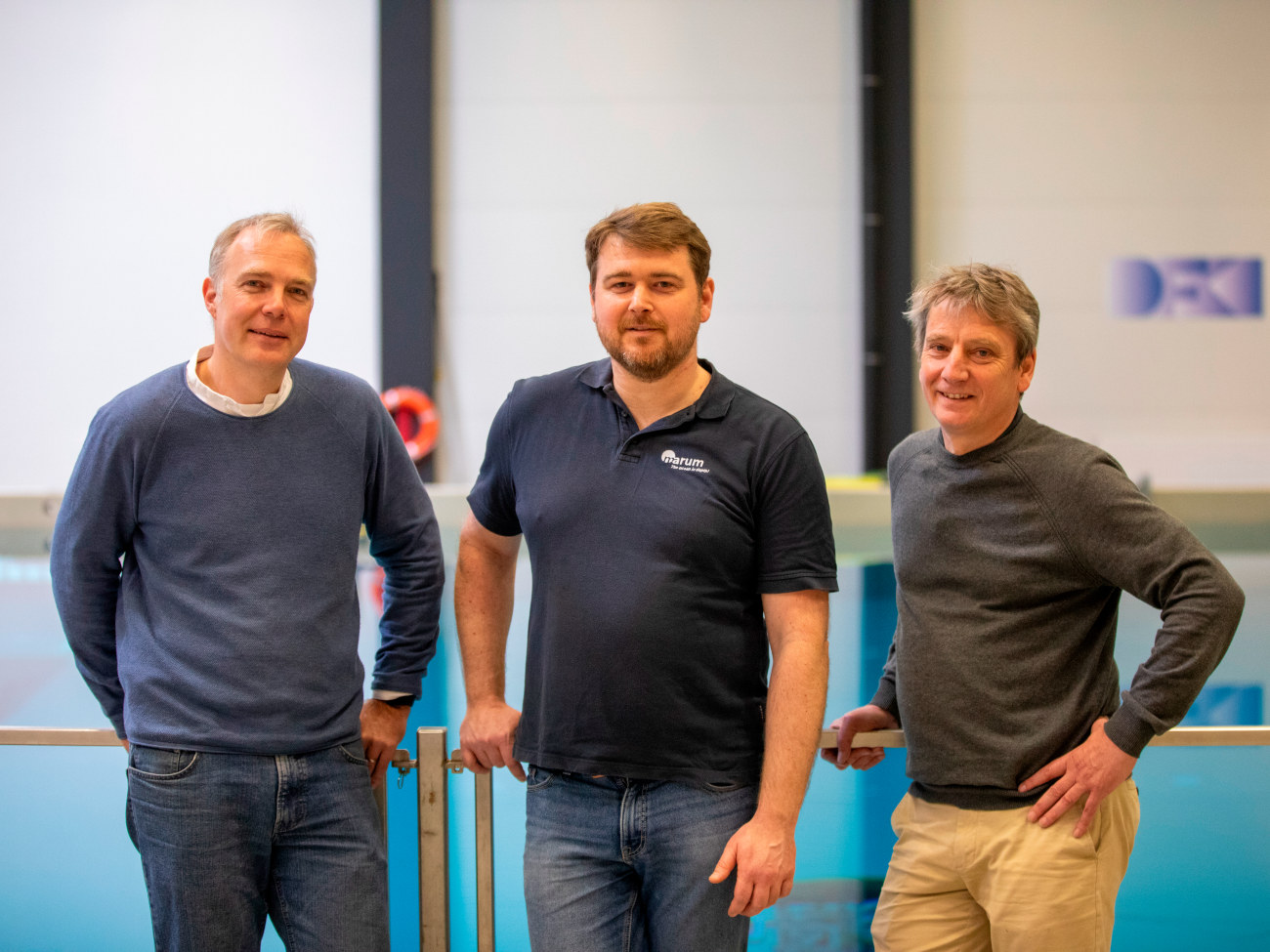
© Jens Lehmkühler
“TRIPLE” is the name of this ambitious joint project, which was initiated by the German Space Agency of the German Aerospace Center (Deutsches Zentrum für Luft- und Raumfahrt; DLR). The acronym TRIPLE stands for “Technologies for Rapid Ice Penetration and subglacial Lake Exploration.” This project encompasses many individual projects, one of which is led by MARUM – Center for Marine Environmental Sciences at the University of Bremen: TRIPLE-nanoAUV2. Industrial partners take part in developing the “Autonomous Underwater Vehicle” (AUV), as does the Robotics Innovation Center of the German Research Center for Artificial Intelligence (DFKI), which like MARUM is a member institute of the U Bremen Research Alliance. The Federal Ministry for Economic Affairs and Climate Action is funding the project with 2.68 million euros.
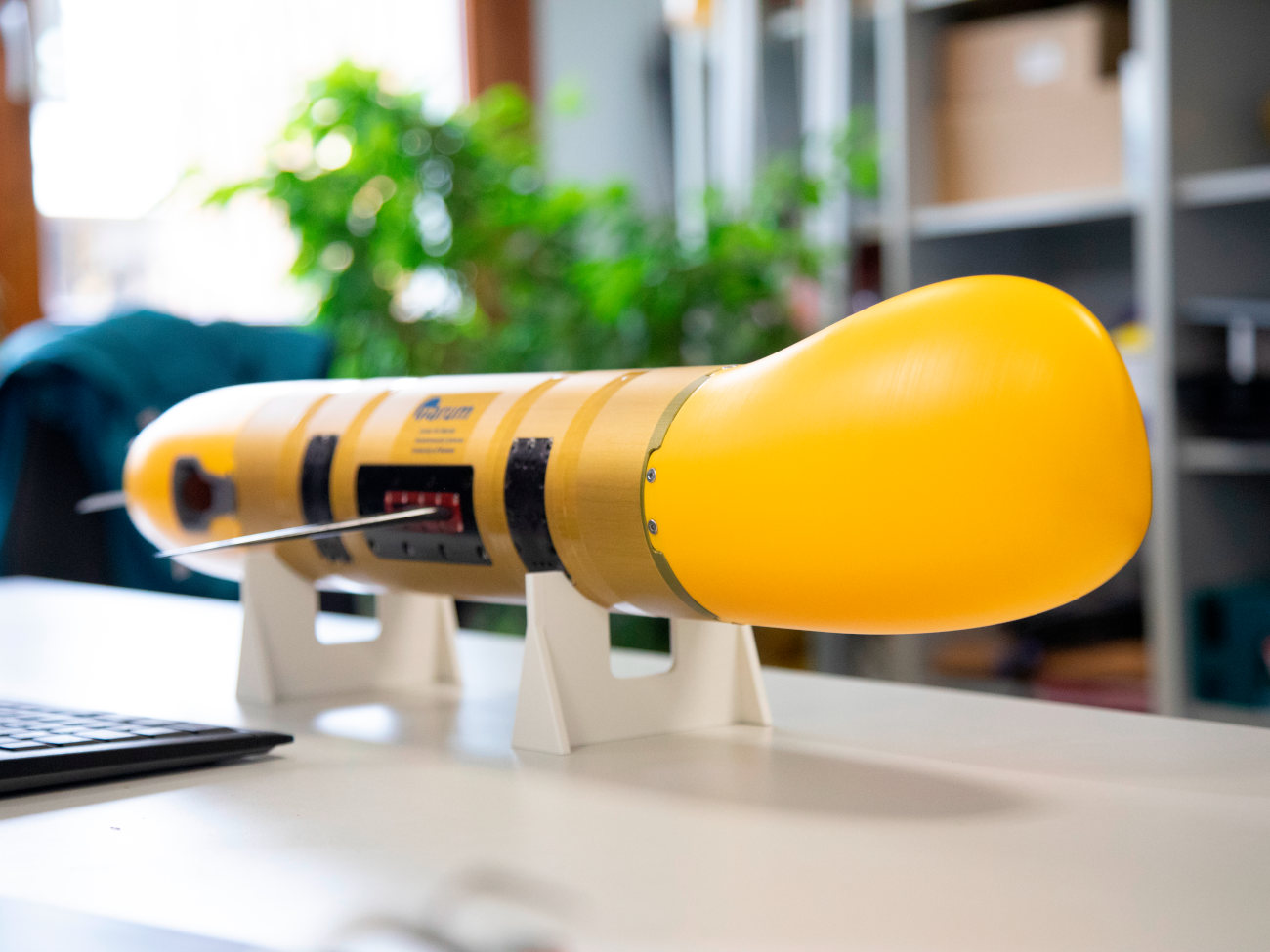
© Jens Lehmkühler
60 centimeters long, ten centimeters in diameter and with a bulging nose. The vehicle does not look impressive on the outside, but what is inside makes it truly remarkable. Several sensors, cameras, drive technology, batteries, computer chips, electronics – “all of this needs to work in a very confined space and be able to withstand the Dome C region’s ambient pressure of up to 400 bars,” says project leader Prof. Dr. Ralf Bachmayer, describing one of the challenges of the project. Some components work in pressurized oil. Others, which don’t work with high pressure or in liquids, must be protected accordingly. The entire AUV is undoubtedly pioneering work.
MARUM is developing the docking station, a robotic arm that will release and retrieve the AUV under the ice. The docking station, like the vehicle, is contained within the five-meter long probe, which melts its way through the ice to its destination at a speed of ten meters per hour. Once there, a flap opens, the arm grabs the mini robot by the nose and positions it according to the current. Sensors and cameras let Sebastian Meckel follow the undocking process from the surface of the Ekström Ice Shelf. The launch and recovery system also serves as a relay station by transmitting all the information gathered by the vehicle.
Until now, the ecosystem beneath the ice shield has largely been terra incognita; never before has anyone permeated the Dome C region.
The AUV will leave the docking station with a maximum range of 300 meters and take water samples and measurements. In this unknown environment, it needs to be able to navigate and know where to go and how to find its way back. This is where the DFKI comes in. “Artificial Intelligence is not only used to create the navigation software,” says Dr. Leif Christensen, team leader of maritime robotics at DFKI. It is also used to detect the robot’s surroundings using acoustic and optical signals as well as close-range navigation for docking. The system needs to be able to interpret the data independently and determine how far it can go with the remaining energy and the currents, and when it is time to turn back.
Until now, the ecosystem beneath the ice shield has largely been terra incognita; never before has anyone permeated the Dome C region. Does life exist below the ice, and if so, in what form? “One goal is to investigate this,” Bachmayer explains. TRIPLE was initiated for space exploration; international space missions look to explore Jupiter’s ice moon Europa and Saturn’s moon Enceladus. TRIPLE is one small step on the way. The conditions in Antarctica are most similar to those on these moons. “This is the most challenging surface Earth has to offer,” Meckel explains.
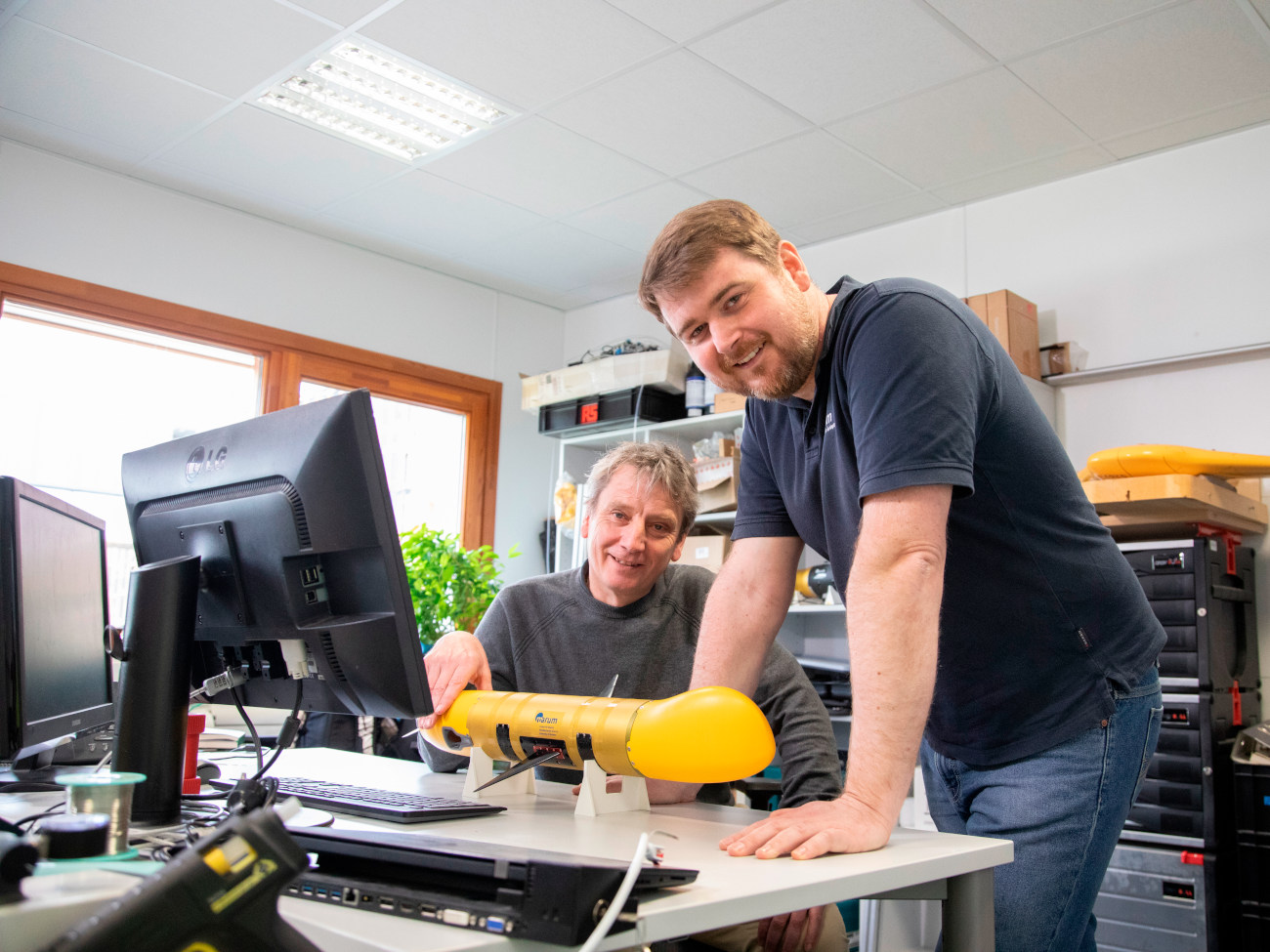
© Jens Lehmkühler
Space research helps with developing new technologies that are useful on Earth. One example of this is the interaction between components in small spaces in the AUV. “Miniaturization is a very interesting challenge with many areas of application,” says Bachmeyer, both engineer and holder of the Werner Siemens endowed professorship for marine environmental technology / deep sea engineering. Leif Christensen sees the maintenance and supervision of offshore wind parks as a possible use for this technology. “There is a foreseeable high demand for robust systems that can stay on the ocean floor for longer periods of time and can withstand these harsh conditions.”
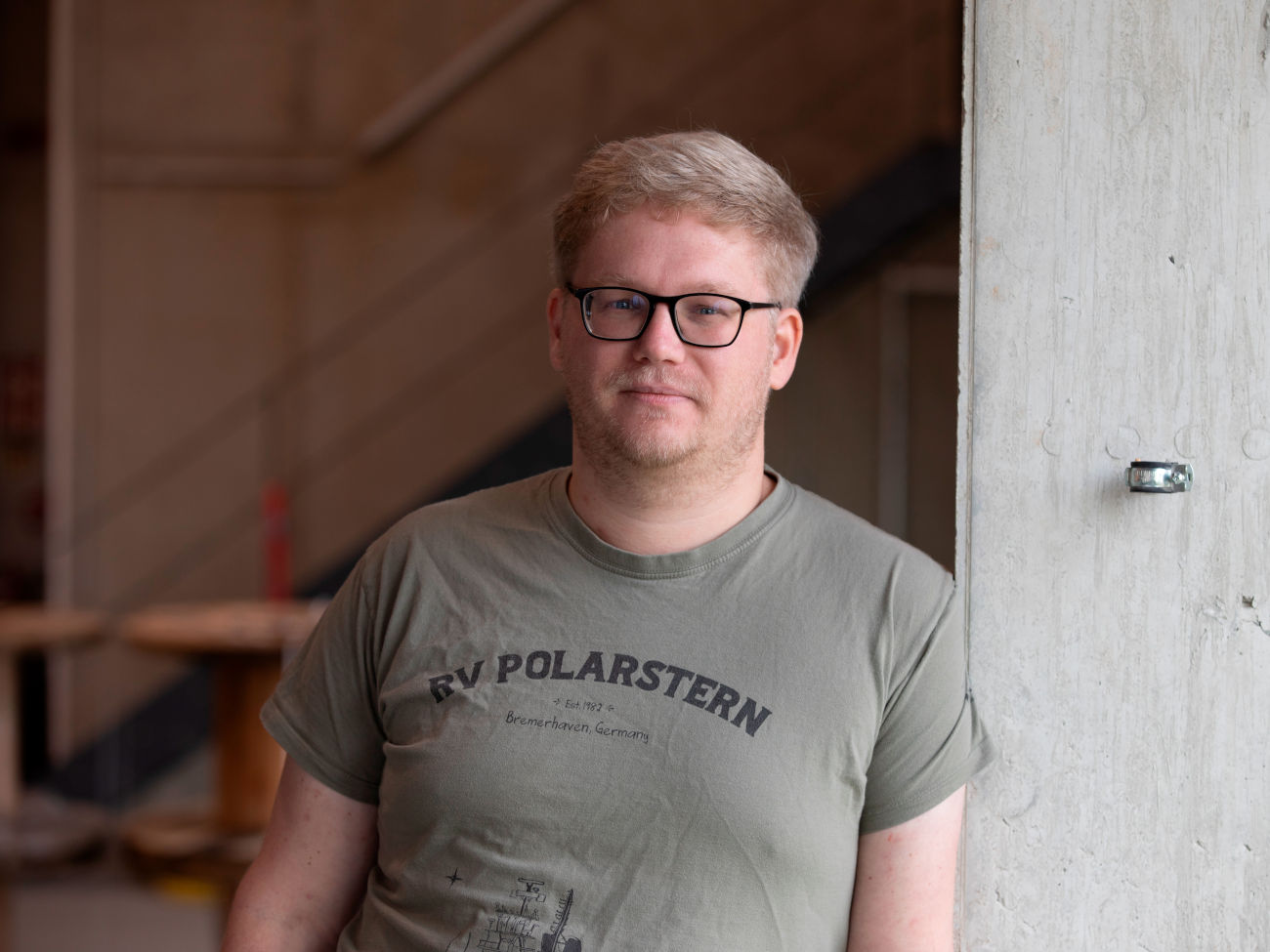
© Jens Lehmkühler
In addition to the University of Bremen’s MARUM and the DFKI, another member of the U Bremen Research Alliance is also part of the TRIPLE research: the Alfred Wegner Institute (AWI), Helmholtz Centre for Polar and Marine Research. “TRIPLE Life Detect” is the name of the subproject that intends to measure traces of life under the ice, searching for carbon, hydrogen, oxygen, and nitrogen as well as environmental DNA, which would give evidence of current and previous inhabitants. This is done using underwater sensors. “With our partners, we are developing scientific uses for this equipment,” Malte Pallentin, engineer at AWI explains. Previously, AUVs in the deep sea only measured one or two parameters. By contrast, the mini robots should be capable of gathering many different traces of life, with even smaller sensors. “This is unique among all deep-sea uses worldwide,” Pallentin reveals. For AWI, which conducts research primarily in the Arctic and Antarctic, the development of the mini robot is an important innovation. “The regions below the ice shelf are 99 percent unknown. Collecting data there is extremely difficult,” Pallentin says. “We hope to break new ground and collect measurements that have not been possible before.”
Due to the connections between marine and space technology within the U Bremen Research Alliance, Bremen is predestined for a project like TRIPLE. In Germany, even in all of Europe, there is nothing comparable.” Prof. Dr. Ralf Bachmeyer
Pallentin was born in Bremerhaven and returned to his hometown after working for many years at the Leibniz Institute for Baltic Sea Research in Warnemünde. Bachmayer is from southern Germany and was employed for a long time in the USA and Canada. Christensen grew up near Kiel; Meckel is from Thuringia. All live in Bremen due to their passion for science.
“Due to the connections between marine and space technology within the U Bremen Research Alliance, the location is predestined for a project such as TRIPLE,” Bachmayer is convinced. “In Germany, even in all of Europe, there is nothing comparable.” Christensen views things similarly: “Many people from different fields work together over long periods of time on projects like this. When we then see how the robot we developed together swims, that is very rewarding,” he describes his fascination with research.
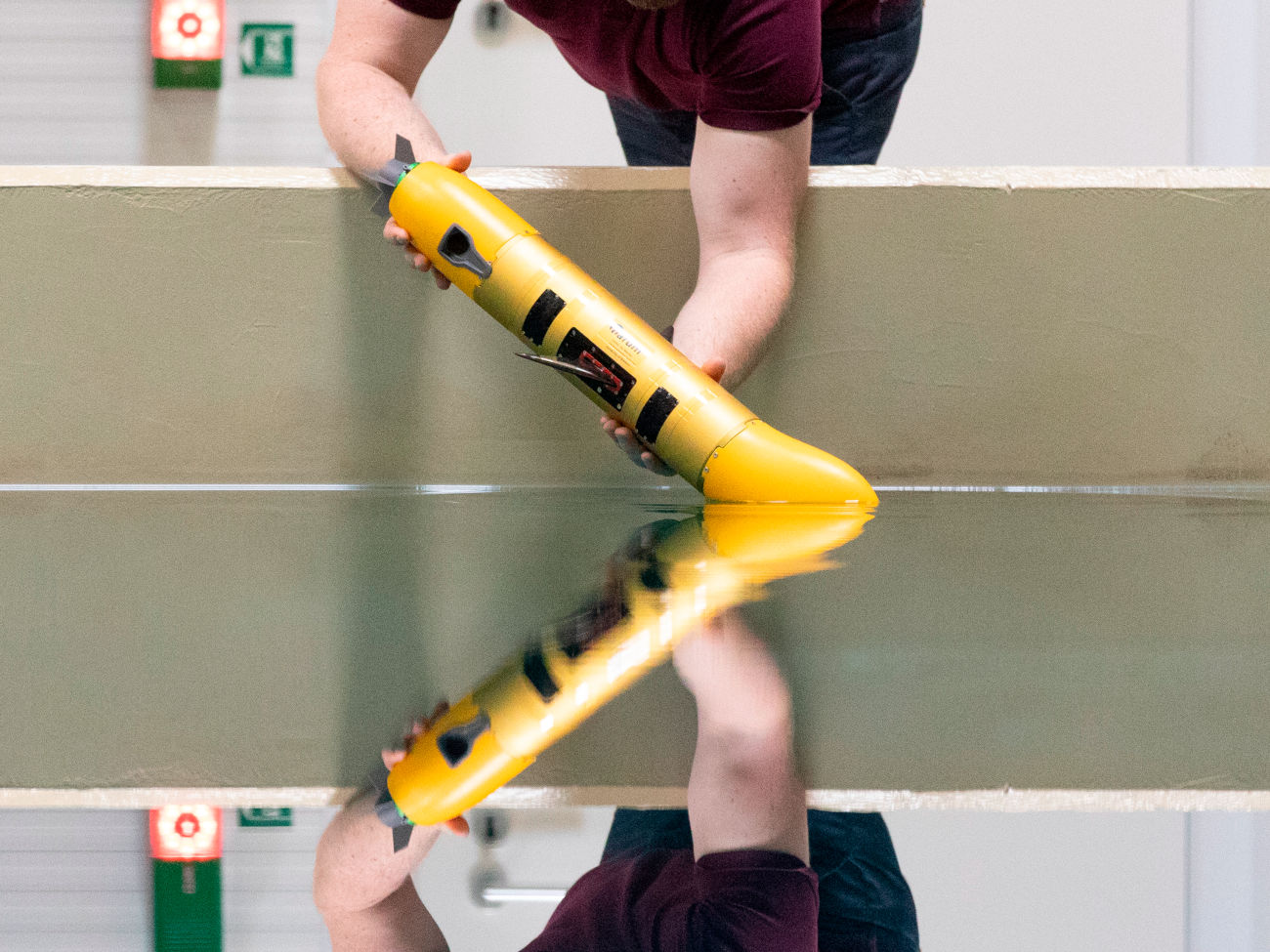
© Jens Lehmkühler
It will be a while before the mini robot swims in its first sea adventure. The AUV is currently being assembled and will then undergo a series of tests, including in the large test basin of the DFKI Maritime Exploration Hall. “The technical requirements are enormous. A lot can go wrong,” Meckel tries to manage expectations. Everyone is aware of the risks of the expedition into the icy depths of Antarctica, Bachmayer reports. “For us, this is more inspiring than scary.”
TRIPLE for Students
In addition to the researchers, master’s students from Faculty 3: Mathematics and Computer Science at the University of Bremen also participate in the research. For their “Triple-Sim” master’s project, they developed a graphic simulation environment for navigating the vehicle. With this software, they can test the sensors by introducing errors and assessing how the vehicle responds to these. Prof. Dr. Ralf Bachmayer is very impressed by the interaction with the students, “They performed even better than expected. I think we will expand this offer.”
This article comes from Impact – The U Bremen Research Alliance science magazine
The University of Bremen and twelve non-university research institutes financed by the federal government cooperate within the U Bremen Research Alliance. The joint work spans across four high-profile areas and thus from “the deep sea into space.” Biannually, Impact science magazine (in German) provides an exciting insight into the effects of cooperative research in Bremen.